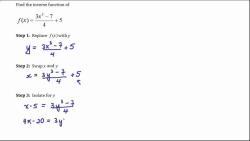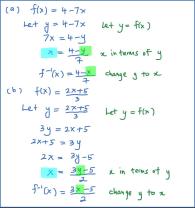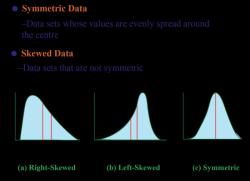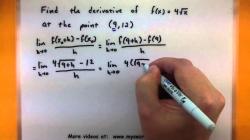What is the formula to find the area of a triangle?
The formula to find the area (A) of a triangle depends on the type of triangle you have and the information you know about it. There are different formulas for different scenarios:
For a Right Triangle:If you have a right triangle (one angle is a 90-degree angle), you can use the following formula:
A = (1/2) * base * height
- "base" is the length of the side that is perpendicular to the height and forms the base of the triangle.
- "height" is the length of the perpendicular line from the base to the vertex opposite the base.
For an Equilateral Triangle:If you have an equilateral triangle (all sides are of equal length) and you know the length of one side (s), you can use this formula:
A = (sqrt(3) / 4) * s^2
- "s" is the length of one side.
For a Scalene or Isosceles Triangle:If you have a scalene or isosceles triangle and you know the lengths of all three sides (a, b, and c) and the semi-perimeter (s), you can use Heron's formula:
s = (a + b + c) / 2A = sqrt(s * (s - a) * (s - b) * (s - c))
- "a," "b," and "c" are the lengths of the three sides.
- "s" is the semi-perimeter, which is half of the perimeter (s = (a + b + c) / 2).
It's important to use the appropriate formula based on the information you have about the triangle. If you know the base and height, the first formula is suitable. If you know the side length of an equilateral triangle, the second formula applies. If you have information about all sides and the semi-perimeter, you can use Heron's formula to calculate the area of a scalene or isosceles triangle.
Area of a Triangle: The Mathematical Formula and Its Application
The area of a triangle is calculated using the following formula:
Area = 1/2 * base * height
where:
- base is the length of any side of the triangle
- height is the perpendicular distance from the base to the opposite vertex
This formula can be applied to any type of triangle, regardless of its size or shape.
Here is an example of how to use the formula to calculate the area of a triangle:
Given a triangle with a base of 10 cm and a height of 5 cm, the area of the triangle would be:
Area = 1/2 * 10 cm * 5 cm = 25 cm^2
Triangular Area Computation: A Step-by-Step Guide
To calculate the area of a triangle using the formula, follow these steps:
- Measure the base of the triangle.
- Measure the height of the triangle.
- Multiply the base by the height.
- Divide the product by 2.
The result is the area of the triangle.
Mastering Triangle Area: How to Calculate It with Precision
To calculate the area of a triangle with precision, it is important to measure the base and height accurately. You can use a ruler or measuring tape to measure the sides of the triangle.
If the triangle is not right-angled, you can use the Pythagorean Theorem to calculate the height of the triangle. The Pythagorean Theorem states that in a right triangle, the square of the hypotenuse is equal to the sum of the squares of the other two sides.
Here is an example of how to use the Pythagorean Theorem to calculate the height of a triangle:
Given a triangle with a base of 10 cm and a hypotenuse of 12 cm, the height of the triangle would be:
height = sqrt(12^2 - 10^2) = sqrt(44) = 2sqrt(11) cm
Once you have calculated the base and height of the triangle, you can use the formula to calculate the area of the triangle.
Applications of the Area of a Triangle
The area of a triangle can be used to solve a variety of problems in mathematics, physics, and engineering. For example, the area of a triangle can be used to calculate the volume of a pyramid, the surface area of a prism, and the force of gravity acting on a triangular object.
Here is an example of how to use the area of a triangle to calculate the volume of a pyramid:
Given a pyramid with a triangular base with an area of 25 cm^2 and a height of 10 cm, the volume of the pyramid would be:
Volume = 1/3 * area of base * height = 1/3 * 25 cm^2 * 10 cm = 83.33 cm^3
The area of a triangle is a basic concept in geometry, and it has many important applications in other fields of mathematics and science.












